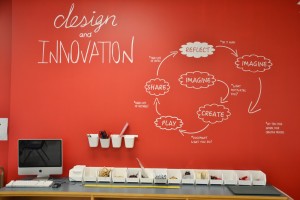 In his insightful valedictory address, Adam Vandenbussche ’17 (Pre-U ’18) talks about his Pre-U experience and what he believes is the key to success.
In his insightful valedictory address, Adam Vandenbussche ’17 (Pre-U ’18) talks about his Pre-U experience and what he believes is the key to success.
Take a look!

 In his insightful valedictory address, Adam Vandenbussche ’17 (Pre-U ’18) talks about his Pre-U experience and what he believes is the key to success.
In his insightful valedictory address, Adam Vandenbussche ’17 (Pre-U ’18) talks about his Pre-U experience and what he believes is the key to success.
Take a look!
 My time is almost over in South Africa and I will definitely miss attending school at St Stithians College in Johannesburg. You’d be surprised how much this school differs from LCC. First things first, the school campus is at least ten times the size of LCC’s. I have to be honest and say that it is a bit overwhelming to be here as a new student. Without my exchange student’s help, I would never find my way to our next class.
My time is almost over in South Africa and I will definitely miss attending school at St Stithians College in Johannesburg. You’d be surprised how much this school differs from LCC. First things first, the school campus is at least ten times the size of LCC’s. I have to be honest and say that it is a bit overwhelming to be here as a new student. Without my exchange student’s help, I would never find my way to our next class.
Not only is this school impressively big, but it is also one of the best cricket and tennis schools in Africa. I feel so fortunate to have the opportunity to be attending this fascinating school. In addition, the school is completely outdoors, meaning that when you step out of any class, it leads you outside. Therefore, having rain isn’t ideal.
Lastly, at St Stithians, electronic devices aren’t often used in classes. In the vast majority of classes, everybody takes handwritten notes and all work is also written by hand. At LCC, we have our work online most of the time.
Despite their differences, there are some parts of Saints and LCC that are similar. Everybody has their own desk and there are generally six periods in a day (which is one more than us). There is an option of bringing your own lunch or eating at school. Everything else is pretty much the same.
The first three weeks I was in South Africa were the school holidays. During my holidays, my exchange family brought me to a nature reserve called Ingwelala. That was, without a doubt, an unforgettable experience. We slept in huts with thatched roofs in the middle of the bush. The bush is the home to lions, elephants, leopards, buffaloes, hyenas, bucks, snakes, rhinos, hippos, giraffes, zebras, monkeys, baboons, warthogs and many more. This means that we were living in their home and had to accept that there was a chance that any sort of animal might come near us. For a Canadian who has only ever seen wild bunnies, this was an exhilarating experience.
The big five of South Africa were considered to be the five most dangerous animals to hunt (today, with wildlife preservation efforts, the expression refers to observing these animals). They are the lion, the elephant, the rhino, the leopard and the buffalo. It is considered fortuitous to see any of them. During my stay, I had the chance to see lions, elephants, buffaloes and a rhino. This is four of the big five!
A story I must tell is when a spotted hyena came to our porch when we were eating dinner. That’s right, this 120-pound, five-foot (in length) deadly animal came within three feet of me when I was eating a delicious steak. Note that hyenas have the tenth strongest bite in the world. This means that they can bite through a brick wall. When we saw the hyena come on our porch, nobody moved or said a word. On the outside, I seemed as immobile as a statue, but on the inside, I was completely freaking out. The worst part is that the hyena went behind me, therefore out of my line of vision. At that point, I had no clue where it was or what it was doing. Luckily, it left peacefully and nothing bad happened. Looking back at this, I appreciate the fact that I was able to be part of an exciting, wildlife experience.
All in all, South Africa has been very enriching in the sense that there are very different lifestyles around the world. I am very grateful for this opportunity and I will definitely cherish these last few days in this exotic country. – Max Kaspy ’20 Exchange Student at St Stithians College
 I’ve always been interested in architecture. When I was little, I used to build houses out of wood, draw floor plans of my room, and play on interior design apps. As I got older, I started watching a lot of HGTV and going around the city taking photos of different buildings.
I’ve always been interested in architecture. When I was little, I used to build houses out of wood, draw floor plans of my room, and play on interior design apps. As I got older, I started watching a lot of HGTV and going around the city taking photos of different buildings.
Last year, I joined Project 2050, a club that focuses on how we as a society can adapt to the environmental and societal impacts that are predicted by the year 2050. I started working on an architectural project on sustainable development and wanted to continue working on it, since it focuses on ensuring a better future. This year, I chose Design and Innovation as my elective. For the first couple of months, we learned how to use different tools in the Fab Lab and got to make a bunch of different things and, in December, we started planning our end-of-year project. Every student in the class has to come up with their own invention or concept and present it in May at the Design Fair. Because I had done a lot of research for my sustainable development project and I was really passionate about it, I decided to use it as my final project. Originally, I wanted to create floor plans and a model of my community. I quickly realized that I wasn’t going to have time to do everything that I had planned to do, so I learned how to adapt. I have no idea why, but for some reason, I thought that I would be able to complete a job that takes architects and developers years to do, in the span of five months.
I decided to create a website instead, so I started learning HTML and CSS. I never expected to be learning how to code and I thought that I would probably be using the laser cutter and not much else. Being in Design and Innovation has taught me how to better adapt to situations quickly and how to work more independently. The experience that I’ve gotten so far has been great and has opened the door for so many opportunities.
Besides being in the class and in Project 2050, I’m also lucky enough to be going to San Francisco for a week in June with 10 other LCC students. The purpose of the trip is to meet entrepreneurs, visit the Google and Facebook head offices, and get a better understanding of the evolving tech community. I’m really into law and debating, but because of everything I’ve learned since I started using the Fab Lab, I’m considering going into a more tech-centred job.
Even if you aren’t interested in any of these things, and you’re not a part of any design challenge or club, the Fab Lab is still open to you. If you’re into science, there’s a doctor who is looking for students’ help in making 3D printed prosthetics for his patients. If you really like fashion, there are sewing classes every week in the Lab, there are professionals that come in every once in a while to teach courses, and the Fab Fashion challenge is going on right now. Even if you’re really into art but not that great at using technology, you can help come up with sketches for a public sculpture competition being held in NDG, or you can learn how to use different software to make your sketches a reality. No matter your interest, there’s some type of opportunity available for you in the Fab Lab.
I know you’ve all heard people say that we’re so lucky to have the resources available to us at LCC, but the fact is, that’s true. Because our Fab Lab is part of the International network of Fab Labs, your inventions can get recognized all around the world through Instagram. You might not think that Design and Innovation is for you, but you might be surprised and learn something new, just like I was. – Ella Waxman ’19
 Returning to Montreal by car recently from a weekend out of town, I was disappointed to hear that our city was cloaked in an official smog warning. Many of us may be inclined to associate smog with summer heat and visible thick, orange haze. However, Montreal actually experiences more smog alerts during late fall and winter than we do during the summer. This is because of a combination of heavy cold air and light winds that trap pollution close to the ground.
Returning to Montreal by car recently from a weekend out of town, I was disappointed to hear that our city was cloaked in an official smog warning. Many of us may be inclined to associate smog with summer heat and visible thick, orange haze. However, Montreal actually experiences more smog alerts during late fall and winter than we do during the summer. This is because of a combination of heavy cold air and light winds that trap pollution close to the ground.
The City of Montreal posts a daily Air Quality Index or AQI. It specifically measures levels of carbon and sulphur dioxide, ozone and fine particulate in the air. In recent years, air quality in Montreal has actually improved significantly, especially compared to emissions levels in the mid-1990’s. The two most recent factors leading to improvements occurred in 2014: the closure of a large oil refinery in the east end of Montreal and the shutdown of several coal-powered plants in Ontario and the US Midwest. Experts estimate that air quality in Ontario and the US states that border Canada are actually responsible for 60% of the pollutants in our air. So, we should care about policies and practices outside of Quebec.
Currently, the biggest contributor to smog in Montreal is wood-burning stoves and fireplaces. I was surprised to learn that they represent approximately 40% of the problem when compared to vehicles, which represent just over 20% of local emissions. To address this, new laws have been passed and traditional fireplaces need to be registered and upgraded by October 1, 2018, with most people moving to units that cleanly burn propane or natural gas.
How about the international scene and global warming? The 2015 UN Climate Conference “COP21” received a lot of attention a couple of years ago with the signing of the Paris Accord. It was deemed a significant international achievement because of its objective to significantly reduce emissions globally. The USA, with its massive economy, signed that accord. Yet, the Trump administration supports the coal industry and does not acknowledge global warming as a real threat. Consequently, it has declared it will withdraw from the Paris Agreement, which has alarmed many.
On the positive front, over the past several years the world has actually diminished CO2 emissions levels that contribute to global warming. But, 2017 has been a year where it appears that that trend has stalled and the world has actually slightly increased emissions.
China is a signatory of the Paris Agreement and is also the world’s leader in the development of renewable technologies. However, a drought there last summer diminished levels of rivers and the capacity of renewable hydro facilities to produce enough clean power to satisfy demand. So, the country was forced to turn to coal to meet power needs. India is another large country that has managed to limit the growth of emissions. Yet, forecasters wonder if that can be maintained long-term, given the growing middle class and greater demand for electricity. Given some unforeseen circumstances that have contributed to higher emissions in 2017, will this be a blip or a long-term trend? Nobody is certain about this.
Last week, environment ministers from around the world wrapped up another major UN Environment meeting in Bonn, Germany called COP23, which ended on a positive note. Canada’s Environment Minister, Catherine McKenna, explained that she is part of an alliance of nations determined to completely eliminate coal-powered electricity. Canada has set the year 2030 as the year we aim to achieve this, and we hope to bring several other countries on board.
Eliminating coal-powered electricity will partly be possible due to innovation and falling costs of renewable power. Also, despite US President Trump’s support of coal and denial of climate change science, a lot of important players in the US are actually openly stepping up to combat the president’s position. Mayors of many major cities, state governors and a host of businesses are committed to reducing emissions and the impact of climate change, regardless of what the federal government does.
So, we should all pay attention to the news on climate change. Read about COP23 — there are significant developments afoot with many people and nations striving to find ways to improve the situation. Let’s remember, it’s our collective future we’re talking about here; avoidance and inaction will not solve the problem. – Christopher Shannon (Pre-U ’76), Headmaster
 In October, I had the privilege of being one of over a thousand student and adult delegates at the Round Square International Conference in Cape Town, South Africa.
In October, I had the privilege of being one of over a thousand student and adult delegates at the Round Square International Conference in Cape Town, South Africa.
A significant take-away from that experience relates to H2O or water, something that we have in abundance here in Canada, but an important resource that we all largely take for granted.
This is not the case in Southern Africa. Any visitor to Cape Town is immediately made aware that there is a water crisis that has affected the region because of a severe drought for the past five years. This is a place where baths are no longer permitted (plugs have been removed from all tubs in hotels) and showers are now limited to a maximum of 2 minutes.
The city of Cape Town is taking many steps to manage the crisis, yet officials are not certain that they will work. It has adopted a scenario called “the new normal”, declaring the city a permanent drought region and mandating that every citizen change his/her relationship with water by simply consuming less. It has also unveiled a new Critical Water Shortage Disaster Plan in an attempt to avert an even more severe scenario in the future.
As it stands, Cape Town currently only has about 25% of the water that the city requires, and significant changes and reduction levels are being imposed on individuals, families, and institutions such as schools, universities and hospitals.
The city currently uses 618 million litres of water per day, and unless consumption is soon reduced to no more than 500 million litres/day, then the city’s water source could run dry before the end of March, only four months from now.
The municipality is limiting water consumption to 350 litres/day per household in certain cases and strict enforcement measures are being introduced, including fines and other consequences. One option being considered is extreme water pressure reduction across the whole city and to start rationing water with localized temporary shutdowns across different sectors of the city. More recycling of “grey water” will also be mandated. If the city slips into the “disaster stage” or “extreme disaster” stage, the city tap system would be turned off and people will only receive limited amounts of water at designated collection points, primarily for drinking.
Exposure to all of this made me reflect on our relationship to water here in Montreal. As Canadians, we have plenty of this increasingly precious resource. Yet that doesn’t mean we shouldn’t be preserving it more. Unfortunately, on a global scale, we are actually water gluttons. On average each Quebecer consumes about 400 litres of water per day. We are the second largest consumers of water per person in the world, and we consume twice as much as the average European. So, perhaps we should start a new relationship with water ourselves.
On our west coast, the city of Vancouver decided to focus on reducing water consumption over a decade ago and has experienced success (reduction of 20+%). Yet, it is Australia that leads the world in conservation practices. These examples reinforce that we can do better here.
This week, I asked all of our high school students to show greater affinity with Round Square schools in South Africa by trying a week of 2-minute showers. I hope this first step goes well and will lead to further conservation initiatives. – Christopher Shannon (Pre-U ’76), Headmaster